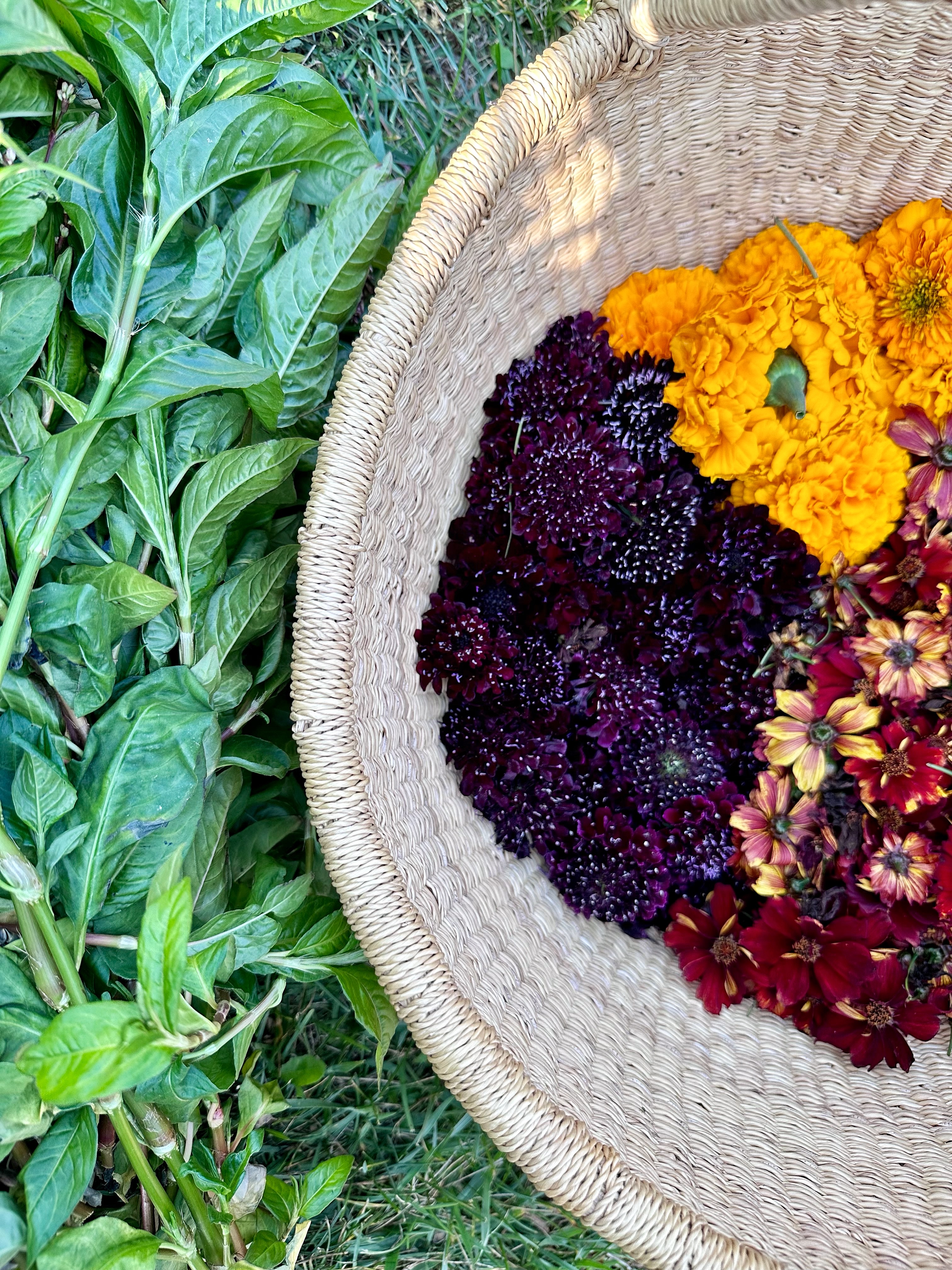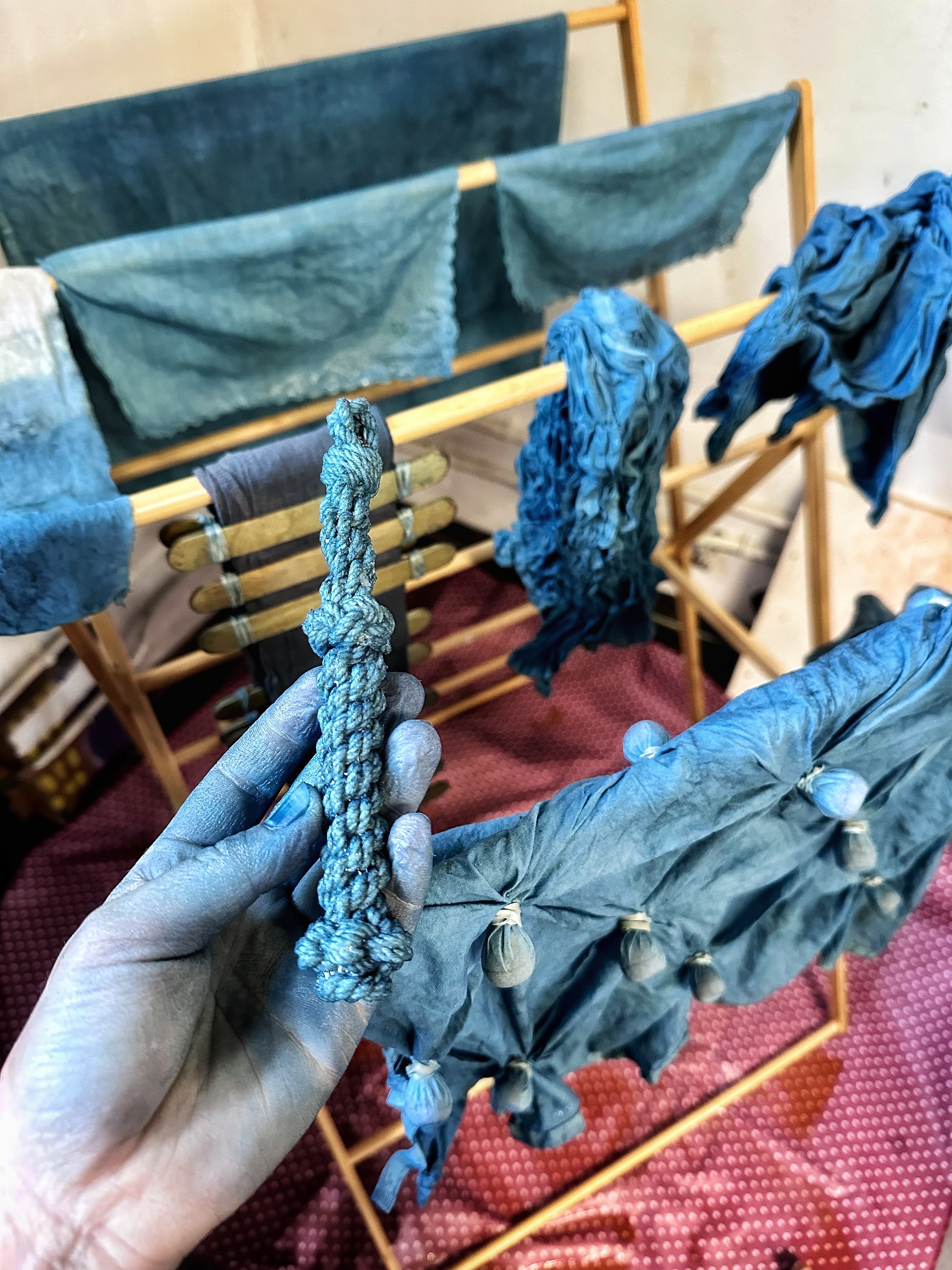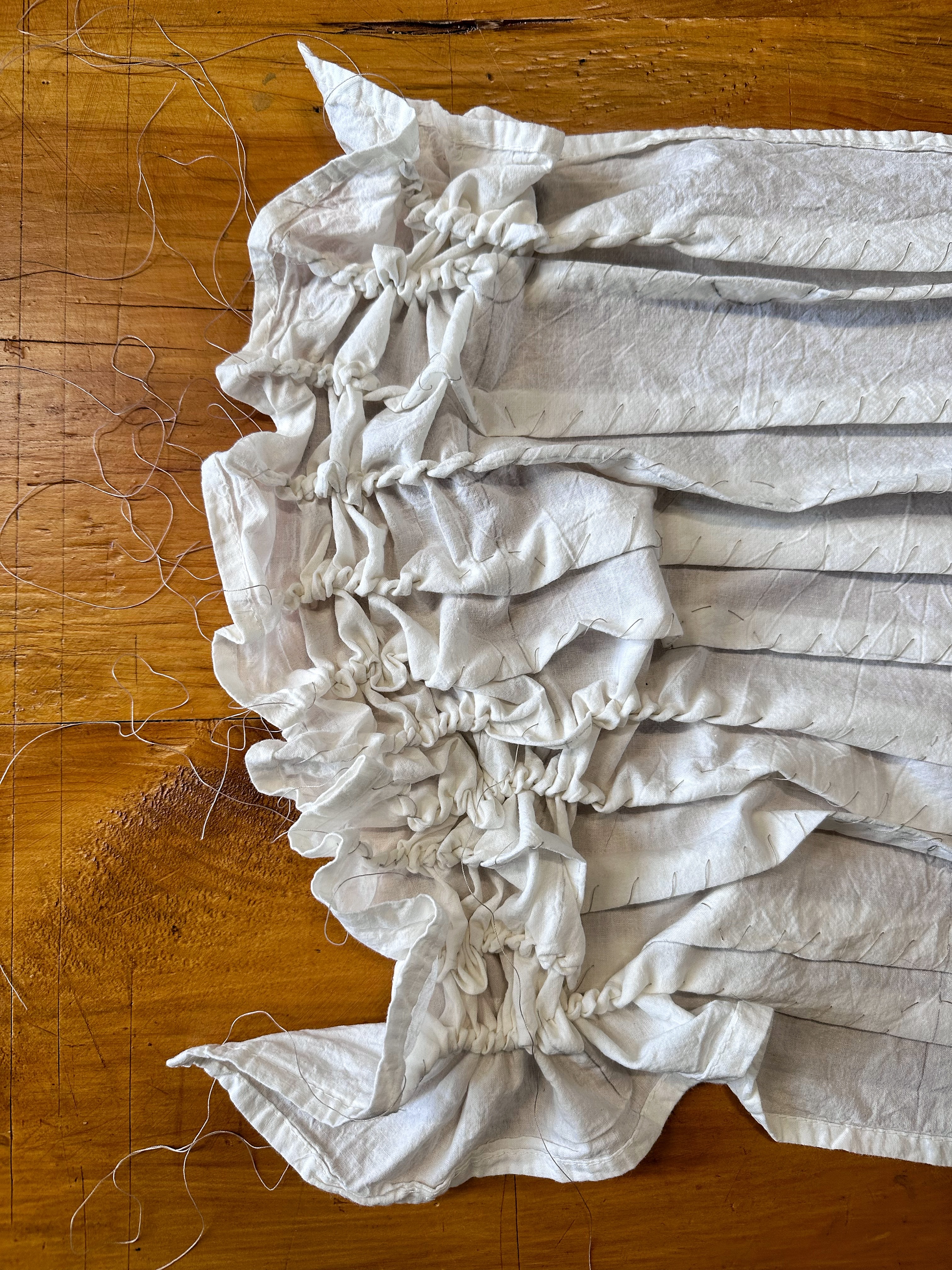
Introducing Liz O'Brien

Working with "living color" is how Resident Artisan Liz O'Brien describes natural dyeing. In her introductory blog post, Liz writes about the roots of craft in her life and embracing the slowness inherent to dye work.
I grew up in a household where craft in the traditional sense wasn’t exactly part of the day-to-day routine, but wasn’t entirely nonexistent either. I have many vivid memories of hand-knitted gifts over the years, my mom working late into the night on ornately cross-stitched tapestries, and my Hungarian great-grandmother spending many (patient) hours teaching me how to make pillowy soft kolache. While reflecting more on my journey to North House, I began to realize that, indeed, all of these things were craft in their own humble way, embedded deeply into everyday life without thought.
Incidentally, this is also how I found myself in the labyrinth of textile arts and needlecraft. I was deep in it long before I even realized it, knitting and hand-embroidering both like an extension of my physical being. As I got older, these two needlecrafts morphed into forms of meditation and creative outlet.
Working with natural dyes came about similarly, offering a path to slow down, observe and connect. In a previous life, I worked for a long time as a naturalist and then farm educator, and it was during that time that I began to see indigo, coreopsis, marigold, goldenrod, and many others I previously associated as companion or pollinator plants in a new light. I would often lose myself for hours in the garden, long after I was done with work for the day. I learned very quickly that natural dyeing is an all-encompassing process.

Since that aha! moment, the allure of growing, foraging, and coaxing what I like to call “living color” from plants has become a cornerstone in my day-to-day routine. Each deadheaded bloom from the garden or onion and avocado peels from meal prep are meticulously saved for later. A walk in the woods is no longer just a walk in the woods. It is an adventure full of endless wonder, appreciation, and excitement for potential dye materials and prospects.
Natural dyeing is intriguing in so many ways, but is not for everyone. It does not provide a sense of instant gratification and in fact, demands the opposite, requiring endless amounts of time and patience. It is this inherent slowness that initially drew me in, and not quite knowing what will happen that keeps the magic and my curiosity alive.

The seamless blending of natural dye work and the fiber arts is also something that fuels my desire to keep learning and experimenting. There are endless color combinations, dye recipes, and stitching techniques to explore. Currently, I’ve been most interested in varying shibori techniques, a form of Japanese resist dyeing that includes folding and stitching fabrics in an array of shapes and lines to form intricate surface designs. The process of stitching these fabrics is long and at times tedious, but the end results are always worth the time and effort put into them.

During my time in the Artisan Development Program, I’ll mainly be focused on natural dye work as it relates to textiles, with a special emphasis on garden-grown or locally harvested dyes. I’m very excited and immensely grateful for this opportunity to learn, grow, and share more of what I’ll be up to in future posts!